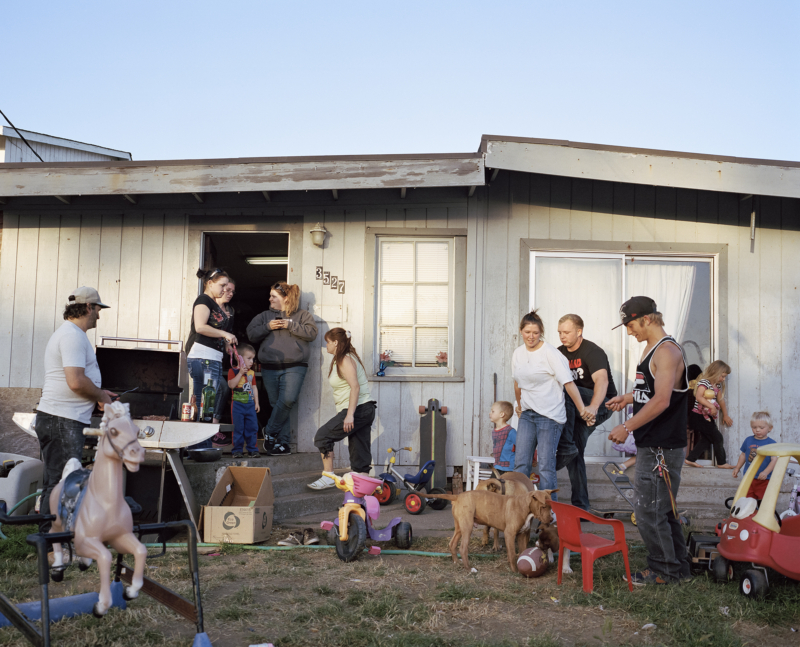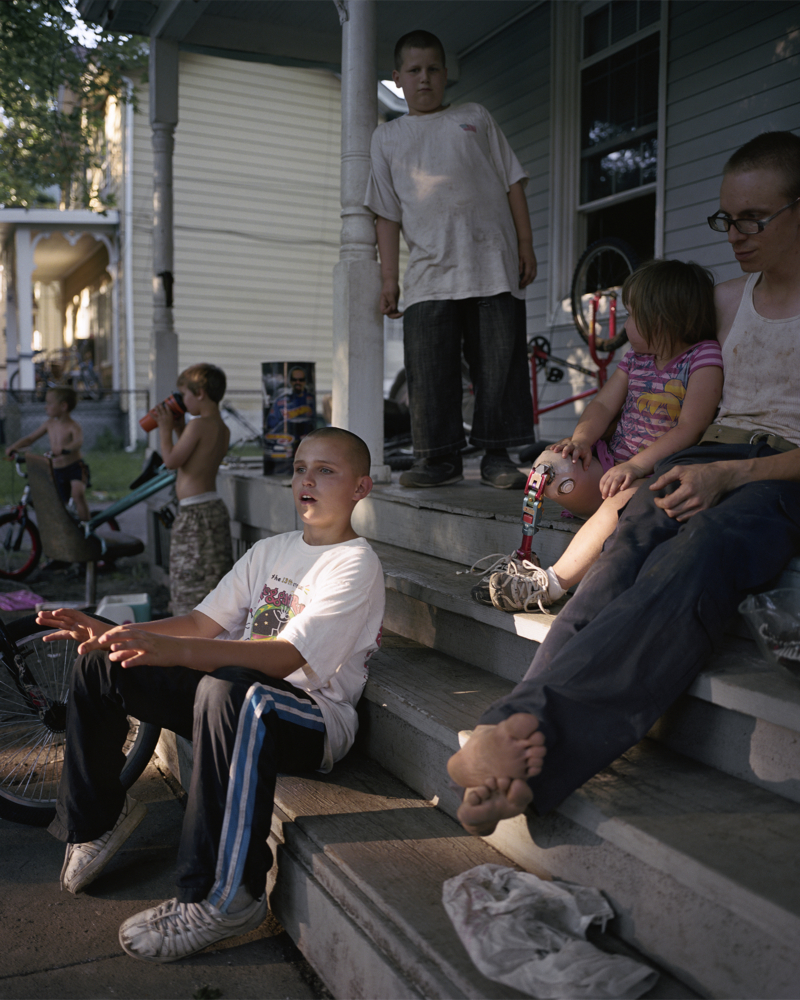Interview – Curran Hatleberg
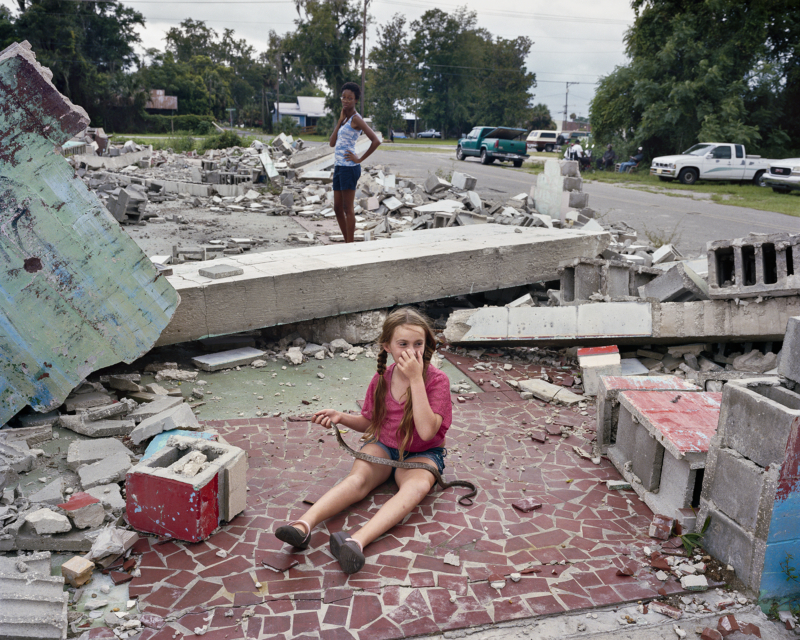
In Lost Coast, Curran Hatleberg tells the story of Eureka, California. Intimate portraits of town and people form a collection of short stories, building an understanding of place. The pictures exist between extremes: between the grand and the granular, between the breathtaking natural landscape and the grim reality of industrial decline.
The resulting portraits of everyday life contain stirring moments of intimacy, each frame its own micro narrative about life in the town. The pictures could be documents or dreams, but they all centre on the strange beauty of an overlooked American life.
I can’t help but notice the constant appearance of watermelons throughout your work. Watermelons being enjoyed by the people you photograph, in still lives, and even in a GIF on your website. Can you give some insight as to why you are so drawn to this fruit?
I love summer. Everything about it. The weather is warm, the days are long, people linger outside, and wherever they gather, you’ll find watermelons. I shoot the bulk of my work during the summer months, so watermelons are often around. When I see one, all the good feelings swell up in me. It’s no surprise they often show up in my pictures.
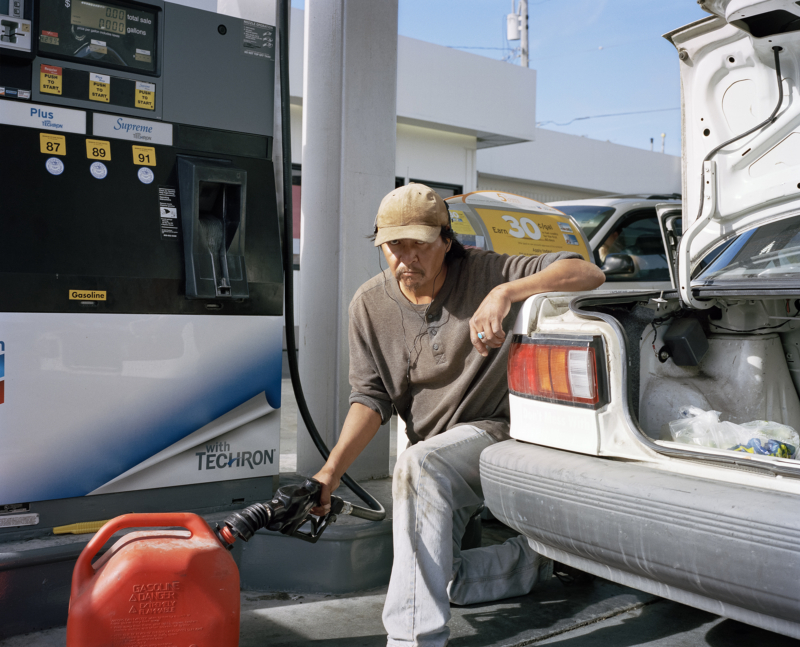
Your work throughout the show, But Still it Turns, is centred around people and place. In a recent conversation with Ramell Ross and Liv Constable Maxwell of MACK, you mention that you ended up in Eureka, California because of a teaching opportunity. During that time, did the relationships with the people you met and photographed change over time? How did these changes affect your work?
The more you get to know someone, the more complicated and rich the relationship becomes. Boundaries change, perspectives shift and things are revealed through conversation and experience that deepen the connection. With photography, it’s no different. Everyone I photographed in Lost Coast was a stranger at first, but over time a kind of trust, intimacy and vulnerability developed, which produced a natural kind of shared understanding. This only happens by spending time together. Sometimes it results in better pictures, but not always.
Most of the time I’m with people, the camera isn’t pressed against my eye. Generally, I’m too lost in the moment or focused on the conversation at hand. The camera is usually out of sight, stowed in a bag nearby. Sometimes many days slip by and I don’t even touch it. But when things get interesting—when the light gets good or I can feel the moment ramping up—it’s close at hand, ready to go.
The American road trip genre of photography has made a major comeback in the last ten years. As someone who has created something original within this subset, where do you see this genre going in the next five years?
I’ve never felt entirely comfortable linking my work to the road trip genre, as you put it. I do know that when I was first starting out, it was my first love in photography, my gateway drug. There are some amazing photographers in that tradition that I really respect, but it’s also a genre with a complicated and problematic history of exclusion. The very nature of travelling and moving freely around the country, photographing whatever you want—that’s a tradition of privilege. A privilege almost exclusively reserved for straight, white, cisgender men. Moreover, the myth surrounding ‘the road’ is grounded in a grand lie that the artist is out there working at it all alone, with heroic singular effort, bending the world to their creative will—their art is the purity of their own ideas writ large! In my experience, these are claims of great absurdity—fabrication linked to notions about American exceptionalism. I guess I just don’t relate to those ideas, and never have. There are so many people involved in making my work, it would be disingenuous to say I was solely responsible.
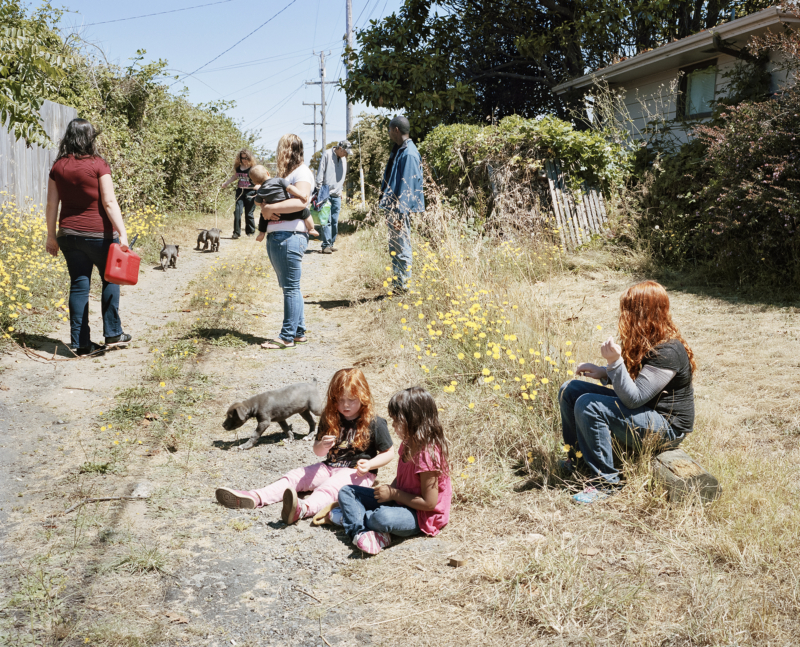
I like to think of myself as a collaborator, not some wandering drifter. I think of my work as a search for connection, community, and family. When I’m working, I’m not just roving around aimlessly, looking for pictures; I’m purposely seeking contact—to connect with people, to join communities, to find friends and allies, to spend time with families. My subjects are my collaborators, and without them the work doesn’t exist. The work is about a mutual interest and vulnerability, and I strive to make my subjects the co-authors.
That said, my hope for the ‘road’ tradition is that new voices and new perspectives are introduced. This is already starting to happen. At its core it’s an American problem, not just a photography problem. It was only very recently that women, people of colour, LBGTQ+ people could move around the country freely, and of course, even now there are a lot of places they can’t go easily or safely. I hope that, as the country continues to change and open up to more diverse experiences and stories, we’ll see a lot more voices making ‘road’ photography, and we’ll get to see a lot of new takes on what the road means. I’m excited for that change; I’m looking forward to these voices sharing insights, experiences and interpretations that I can’t even imagine yet.

I feel documentary photography often allows the viewer to live vicariously through the people and places that appear in the work. Do you think this desire on behalf of the viewer to form a brief connection with your subjects is a limitation within the genre of documentary photography? Or do you see it in a more positive light in that you are bringing forward the experiences of certain places and people that a wider audience would never think to seek out themselves?
It’s all about creating a feeling. I want a viewer to feel like they’re inside the experience. It’s always my intention to convey an understanding of what life feels like to me at a precise moment, even though it never quite succeeds. How could I ever channel the strange beauty and confounding sensory overload of reality? Even a great photograph ends up being just a soft echo of the lived experience—the residue of something more profound and mysterious. I think we can also get pretty locked into a kind of autopilot in our day to day, numbed to experiencing, and a photograph can be a way of drawing our attention back to reality.
All I can say is that when I’m working, I try to be open, surrendering to life’s wild trance, letting its force pull me and take over. That rare transcendence almost never happens, but I do think that the clarity and detail of a really good photograph can elicit the same sublime experience. It can shake you to your core, and maybe, just maybe for a moment you can feel lost in something bigger than yourself, something unusual and miraculous.
All I can say is that when I’m working, I try to be open, surrendering to life’s wild trance, letting its force pull me and take over.
Something in your work that stood out in the show is the lack of a barrier between you and the people and places you photographed. At times, you seem like a fly on the wall and at other times, your presence is very clear within the images. Throughout your time in Eureka, how did you navigate this very vulnerable exchange between yourself and the people you photographed?
It is actually somewhat infrequent that people say yes and invite me into their life. Most people I approach aren’t interested, and we go our separate ways. Obviously, you don’t see all the defeats in the final work, but much of the work is rejection—many people saying no. When someone does say yes and invite me into their life, it is often because they have something they want to share too. My subjects are often as curious about me as I am about them, and I always try to make our time together a two-way street. We decide to surrender to one another. Sometimes it’s hard to tell who needs whom more in the moment.
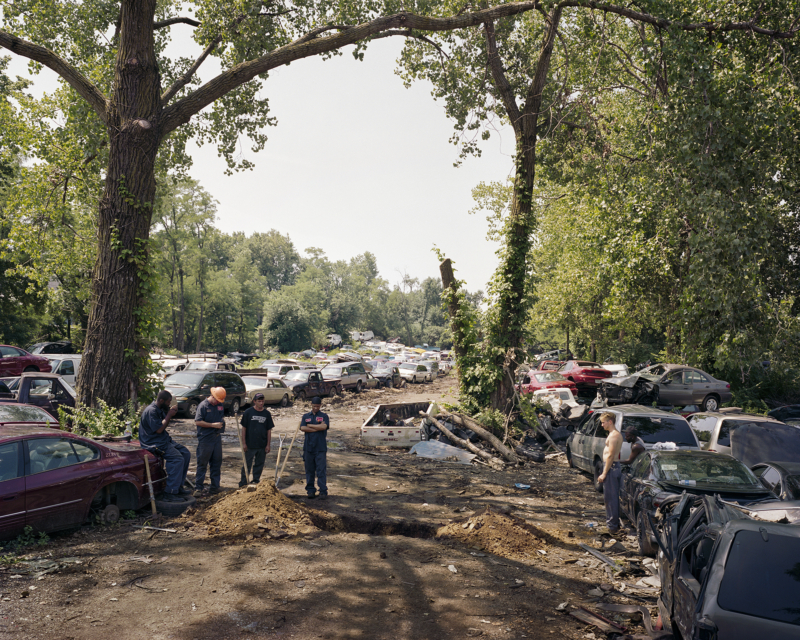
In your work, people and place seem to hold an equal sense of importance in each image. How do you balance these two key themes in such a nuanced way? While you are out in the field, do you seek out either of these themes separately or do they come together in their own organic way?
I have always been interested in placing people on equal footing with the environment they are in. People and places are so intrinsically related. Usually I select places and regions first, then I seek out zones of interest within those areas. A zone can be as big as a town or as small as a front yard. I’m attracted to places that evoke an intensity of mood and feeling that’s difficult to define. It’s less about knowing exactly why I’m drawn in, and more that I’m under their spell for one reason or another. Once I am in a place I am intrigued by, I have to find someone who’s interested in spending time with me and being photographed. When that happens, it’s as if all the different pieces of the puzzle start interlocking and the challenge of actually photographing begins.
The deep connections you establish with the people you photograph are very clear throughout the show. You have talked about the long periods of time you spend with the people you photograph. Do you feel that a strong connection to the people you photograph often leads to a more compelling collaboration or does the occasional ten-minute interaction with a subject hold the same amount of weight?
It varies. A great picture comes from a moment of intimacy and vulnerability, but there’s no rule how long it takes to get to that place. In some instances, I stay in touch with people for years and forge intense bonds, and visit them many times. Other times, I may spend a shorter time with someone—a week, a day, or even an hour.
A great picture comes from a moment of intimacy and vulnerability, but there’s no rule how long it takes to get to that place.
Think of a love affair. There are people you’re married to for 40 years, and then there are people you date for just a few months or even one really intense night. The intimacy can be just as sincere in each scenario, just different. It’s like that with the people I photograph. It’s all about trying to connect with someone, trying to get to that place that catches your heart. With some people it happens instantly, with others I might spend weeks with them and it never happens.
Many of the photographers throughout the show have different backgrounds from the people they are photographing. How were you able to make connections to the people and places that you photographed? Was it just pure will power? Was it the generosity of the people you photographed? Or does it come down to innate human nature and everyone’s desire to connect?
It’s entirely the last two things you mentioned—both the incredible generosity of the individuals I photograph as well as the innate human desire to connect. I feel these ideas are linked. I want to learn something about their life, and they are excited to share something of themselves with someone else. In my experience in our current society, many people are lonely or feel invisible or overlooked, and at its best, photography is a way of making people feel seen. I too am lonely and looking for connection, reciprocity and understanding, just as they are. We’re all looking to understand ourselves and our country, to understand people like us and people different than us, and photography is just the means by which we are both trying to get there together.
At its heart, I believe my work is about understanding what family and community mean. So many times in my own life, I’ve been lost or adrift, searching for connection and love—the way we all do—and it is not at all an exaggeration to say the people I spend time with and photograph are and have been family to me. I’ve lived with many of my subjects, friends, and collaborators. Eaten with them. Worked with them. Performed tasks and chores with them. In the company of people, life is better. I think the photographs are traces of something deeper and more important.
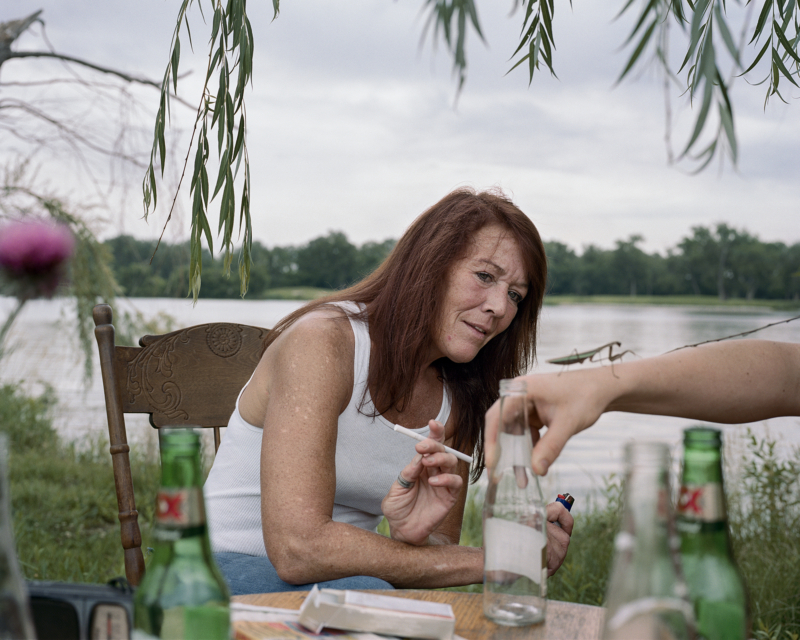
Do you see the creation and success of But Still it Turns setting some sort of standard when it comes to the idea, process, and creation of a group show? How do you see the legacy of the show affecting group exhibitions in the future?
I’m not sure I could ever feel comfortable announcing something as a standard. I certainly don’t have the authority. These things are so subjective and open to change over time. In my mind, any show or book is simply an experiment. A holding place for the final thing, the big idea (which never arrives). It’s just a proposal. A gesture. All I know is I’m grateful for the opportunity to share my work alongside people whom I deeply admire—whose work I am inspired by. I’m always thankful for that.
